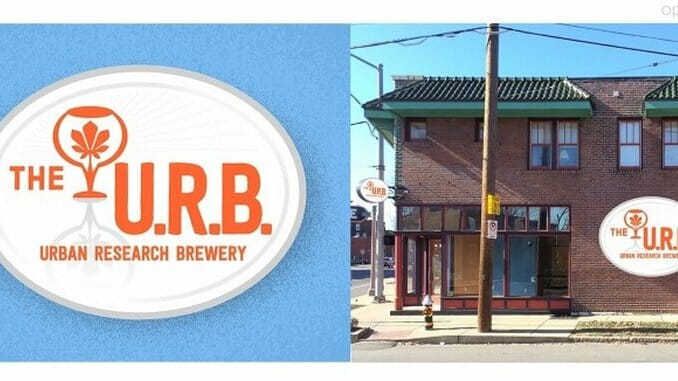Urban Chestnut’s Pilot Brewery is Turning Customers into Makers
Photo via Urban Chestnut
On a deep level, craft breweries are ultra-sensitive to the tastes and desires of their audience. Sure, some take a stance of “We’ll make what we make, and if you like it, you like it,” but that can only work out for so many Hill Farmstead-type examples. Much more often, it’s a matter of finding the synthesis between brewing creativity and what the consumer truly wants. Because in the end, it’s the consumers who decide what kind of beer you make—if you want to stay in business, that is.
And yet, with that in mind, one could say that the process is awfully inefficient most of the time. A brewery designs a new beer from the ground up, jumping through state registration hoops to get a new name, label art, etc. It sinks months of time, effort and money into designing and releasing a new beer without any real idea of how it will be received, beyond “our brewing team likes it.” With resources invested so deeply, anything other than acclaim can’t help but be disappointing.
This is where St. Louis’ Urban Chestnut Brewing Co. has hit on an idea. Across the street from their flagship “Grove Brewery & Bierhall,” the brewery is constructing a second small brewhouse. This new “Urban Research Brewery (U.R.B.)” will be dedicated entirely to creating new beers in a setting where they can be directly sampled and assessed by the public. The entire point of the brewery is to bring consumers one step closer toward being Makers, which immediately caught our eye for this February issue of Paste Monthly.
It helps, of course, that Urban Chestnut is a great brewery, and a standard-bearer for the craft scene of St. Louis, which exploded back in 2011-2014 after two decades of Schlafly and others laying a foundation. With former Anheuser brewmaster Florian Kuplent at the helm, they excel in brewing beers for two distinct families: Authentic, classical German ales and lagers, and more experimental twists upon that basic structure, divided into their “reverence” and “revolution” series. Their classic styles are fantastic—just look at the hefeweizen Schnickelfritz, which placed #2 out of 39 in our ranking of American-made wheat beers. It’s the best thing you can buy on a visit to Busch stadium, and it costs the same price as a Bud. These are easy decisions.
And yet, on some level, success also makes experimentation much more difficult, which is something Urban Chestnut has come to discover. When demand is sky high, you can’t often spare fermenter or bright tank space on new, unusual beers that aren’t tried and tested. Thus, the U.R.B. was conceived as a playground for the company’s brew team to run wild.
“The experimentation previously has really been nonexistent because of cost and the needs of production,” said Urban Chestnut co-founder David Wolfe. “We didn’t roam too far off some of our styles. A lot of what we do is based on Florian’s expertise and the fact that he knows how to write a good recipe, so I know that with the U.R.B. we’ll be exploring a lot of new ingredients and processes.”
As I pushed further for what that might mean or what kinds of beers he’d like to see the brewery make that it hasn’t in the past, Wolfe racked his brain.
-

-

-

-

-

-

-

-

-

-

-

-

-

-

-

-

-

-

-

-

-

-

-

-

-

-

-

-

-

-

-

-

-

-

-

-

-

-

-

-








































